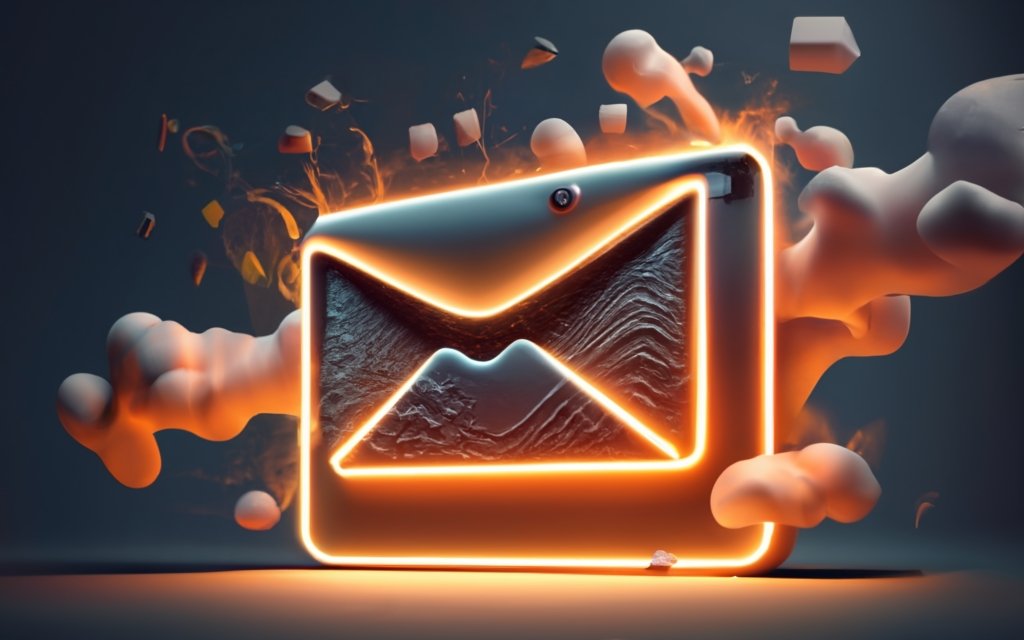Tired of bothersome bounced emails and autoresponders from nowhere flooding your inbox? Don’t let sneaky backscatter spam get one over on you! This comprehensive guide equips you with the knowledge to recognize, handle, and prevent backscatterer emails for good. Arm yourself with insider techniques to banish those pesky fake bounces and keep your inbox backscatter-free.
What is a Backscatterer Email?
Have you ever received an unexpected bounced email from an address you didn’t send to originally? Or gotten an out of place autoresponder for something you never signed up for? If so, you’ve likely encountered backscatter spam.
Backscatterer emails are automated messages generated by mail servers and sent to an innocent third-party’s email address that did not initiate the original message. They most commonly take the form of bounce notifications or auto-replies.
These types of emails can range from a minor annoyance to a major headache, flooding inboxes with useless notifications. Understanding what causes backscatterer emails and how to recognize them can help you manage them properly.
How Backscatterer Emails Are Generated
To understand what triggers a backscatter email, let’s quickly review a normal email delivery process:
- You compose an email and send it to the intended recipient’s address.
- Your mail server connects to the recipient’s mail server to deliver the email.
- The recipient server accepts and stores the incoming message for delivery.
- The email arrives in the recipient’s inbox.
With a backscatter email, a couple things go wrong with this process:
- The original sender uses an invalid, spoofed, or forged return address. It does not match the actual mail server sending the message.
- The recipient address is invalid or nonexistent. When their mail server tries to deliver it, the message bounces.
Because of the fake return address, the bounce notification goes to an innocent third-party instead of the true sender. Their mail server automatically generates and delivers this useless bounce message to someone unrelated to the original email attempt.
Backscatter can also occur in the form of auto-replied delivery confirmations, away messages, and other automated responses from the recipient server. These get sent to the unsuspecting holder of the spoofed return address.
Examples of Common Backscatterer Emails
Backscatter emails often contain clues that reveal their nature if you know what to look for. Here are some common examples:
- Delivery status notifications (DSNs) with status codes like 550 indicating a bounced email. The return path domain will not match your own.
- Out of office auto-replies from employees/accounts you haven’t emailed recently. The messages are triggered by spammers including their addresses.
- Unreadable bounce messages with attachments full of random characters and code.
- Complaints that you sent spam or suspicious links, when you haven’t sent any emails to the complainant at all.
- Legal threats that you violated anti-spam policies or copyrights through an email you never sent.
- Password reset requests for accounts you don’t actually have with a service.
- Sign-up confirmations for mailing lists or sites you did not subscribe to.
The one thing all these have in common? The true sender is faking or obscuring the return address, causing their server’s automated replies to blast irrelevant recipients.
These backscatter emails can range from a minor annoyance to a major headache. But knowledge is power – when you recognize the signs of backscatter spam, you can properly categorize and dispose of it.
The main risk comes from incorrectly assuming a backscatter email is valid and represents real correspondence. For example, replying to one could expose your contact info to spammers. Acting on threats or warnings in one could cause bigger problems.
Now let’s shift gears to explore where all this misleading messages come from in the first place…
The Backscatterer Blacklist Explained
Backscatter emails may be a pain, but they don’t just materialize out of thin air. They originate from mail servers with misconfigurations or weak authentication that allow spammers to spoof addresses.
To combat the problem at the source, there needs to be a way to identify and block these problematic mail servers.
This is where the Backscatterer Blacklist comes in. This crucial tool provides a database of IP addresses known to generate backscatter traffic.
Let’s take a closer look at how it works and how you can leverage it.

Overview of the Backscatterer Blacklist
The Backscatterer Blacklist, also referred to as the Backscatter Blackhole List (BBL), is a DNS blocklist. It contains IP addresses of mail servers and other systems that have been identified as sources of backscatter emails.
It is focused entirely on backscatter-producing IPs, unlike general blocklists that list known spammer IPs.
The advantages of the Backscatterer Blacklist include:
- Preventing backscatter at its source: By blocking malicious and misconfigured mail servers, it stops backscatter before it ever reaches your inbox.
- Optimizing mail processing: Using the blacklist can improve mail server performance by reducing strain from invalid backscatter spam.
- Increased accuracy: Specializing purely in backscatter sources minimizes false positives compared to broader blocklists.
Any mail administrators can leverage the Backscatterer Blacklist to protect their domains by querying the list and rejecting traffic from listed IPs. Major email providers, ISPs, and spam filters incorporate the list into their infrastructure.
It provides a crucial line of defense against the nuisance and potential dangers posed by backscatter spam proliferation.
How The Backscatterer Blacklist Works
The Backscatterer Blacklist operates via a simple but effective process:
- Volunteer contributors around the world send backscatter source IPs to Backscatterer.org.
- The IPs are investigated to verify they are valid backscatter sources. Multiple reports strengthen evidence against an IP.
- Confirmed sources are added to the Backscatterer Blacklist DNS and zone files.
- Mail servers and filters that leverage the blacklist block emails from any listed IPs.
- Listed IPs eventually expire from the blacklist if no new reports come in.
The blacklist is centralized through Backscatterer.org but powered by crowdsourced reports. The global scale provides an extensive view of backscatter behavior.
Investigation prevents listing IPs in error based only on claims. Listings expire rather than persisting forever to encourage fixes. Automated systems query and enforce the blacklist in real-time to stop backscatter spam immediately.
As a result, mail servers can reject up to 98% of backscatter emails before their users even receive them. This saves a lot of hassle.
Who Maintains the Backscatterer Blacklist?
The Backscatterer project and blacklist began independently in 2001 in an effort to identify backscatter sources.
It is entirely self-funded by its founders, Julian Haight and Scott Schober. They manage and maintain the infrastructure, aided by volunteers.
The blacklist operates autonomously using automated algorithms rather than manual review. This allows it to be crowdsourced from contributions worldwide and remain scalable as the internet evolves.
As industry pioneers focused specifically on the backscatter problem before most, their DNSBL remains a trusted standard. Even providers like Spamhaus, Sorbs, and UCEPROTECT integrate Backscatterer data.
The independent status ensures Backscatterer stays focused on identifying backscatter sources above all else. Not being tied to a particular corporate mail system or spam filter allows it to serve the entire email ecosystem.

How to Check if your IP is on the Backscatterer Blacklist
Wondering if your mail server IP may be racking up backscatter complaints and landing on the blacklist? Fortunately, there are a couple easy ways to look it up:
Using the Backscatterer Blacklist Website
The creators of the blacklist provide a free lookup tool right on their Backscatterer.org site:
- Go to Backscatterer.org and scroll down to the IP Check section.
- Enter your full IP address (e.g. 192.168.1.1) in the text box provided.
- Click “Test” to start the search.
Within seconds, you will see an alert if your IP is currently listed or a confirmation if not. Easy as that!
Checking Via Email Blacklist Testing Tools
There are also various well-known email blacklist testing tools that check against Backscatterer and 100s of other lists:
- MXToolbox
- MailTester
- WhatIsMyIPAddress
Simply enter your IP address with any of these tools to instantly see if Backscatterer has blacklisted it. Helpful!
Knowing your current blacklist status is the first step toward getting off the list if needed. Plus routine monitoring ensures you catch any issues early before they escalate.
Staying off email blacklists is pivotal for optimal deliverability. Now let’s go over how to properly remove your IP if it ends up on the Backscatterer list.
How to Get Removed from the Backscatterer Blacklist
Uh oh – after checking the Backscatterer blacklist you discovered your mail server’s IP is on it!
While this isn’t ideal, don’t panic. You can get it removed by following a few key steps:
Determine Why Your IP Was Listed
Before you request delisting, it’s important to figure out what behavior triggered the blacklisting in the first place.
Common causes include:
- Spoofed/forged emails being sent from your server using fake return addresses. Identify and stop the culprit.
- Improper server configurations that don’t adequately authenticate your emails, enabling spoofing. Update your settings.
- Compromised accounts being exploited to relay spam through your servers. Address the breaches.
- Upstream issues at your web host, ISP or their peers indirectly impacting your service. Work with them to resolve.
- False positives from imperfect blacklist algorithms. These happen on occasion.
Determining the root cause will tell you what needs to be fixed before re-listing can be prevented once delisted.
Fix Any Misconfigurations or Compromises
With the reasons identified, now you can actually address them:
- Reconfigure your mail server settings to enable encryption, authentication protocols, security policies and any other relevant protections.
- Audit accounts and systems for outside intrusions, removing any unauthorized access and hardening permissions.
- Review all SMTP and network connections, terminating any unnecessary ones and vetting preferred partners.
- Upgrade outdated hardware, software and libraries plagued by vulnerabilities spammers exploit.
Isolating and resolving the specific problems that opened the door to spamming is crucial. Otherwise, you’ll likely end right back on the blacklist again soon after delisting.

Submit a Delisting Request through Backscatterer.org
Once you’re confident the actual issues have been handled, go to the Backscatterer website and submit a delisting request:
- Navigate to the “Delist” page and fill in your full IP address.
- Provide a brief explanation of why you are requesting removal from the list.
- Click “Submit Request” to send it to the blacklist administrators.
- Wait 1-4 days for them to review and process your request.
The administrators want to ensure issues are resolved before removing IPs, but they do aim to delist compliant requests promptly. Checking your server’s email logs helps provide any details they may need too.
With prevention systems now in place, getting delisted should go smoothly. But maintaining your precautions is still key…
Take Steps to Prevent Re-listing After Delisting
The delisting isn’t the end – staying off the blacklist for good depends on keeping your defenses up:
- Monitor your mail traffic for sudden spikes that may signal trouble.
- Keep authentication measures like SPF, DKIM and DMARC implemented and updated.
- Maintain strong password policies and minimum permissions for all accounts.
- Audit configurations regularly for needed adjustments as email systems evolve.
- Review blacklists weekly to catch any new listings immediately.
With vigilance, your days of dealing with the Backscatterer blacklist will be in the past. But prevention is the best solution, so let’s explore some key ways to avoid it altogether.
How to Prevent Backscatterer Emails
As the saying goes, an ounce of prevention is worth a pound of cure. Stopping backscatterer emails before they ever become an issue is the ideal scenario.
Here are proven techniques and best practices to maintain pristine email hygiene:
Implement Proper Email Server Configuration
Like any spam, backscatter can be significantly limited through proper configuration of your mail servers. Key measures include:
- Enforcing encryption via TLS to encrypt connections.
- Requiring authentication through mechanisms like SPF, DKIM and DMARC to confirm senders and prevent spoofing.
- Monitoring rejected mail to detect issues with bounces or questionnaires.
- Blocking malformed messages that indicative of abusive or invalid traffic.
- Enabling rate limiting to throttle suspicious volume spikes.
- Following reputation monitoring guidelines to avoid general blacklisting.
The right configurations depend on your exact email environment and vendor – consult their recommendations. But these general principles massively strengthen your defenses.
Implement Key Email Authentication Protocols
Let’s explore the core email authentication mechanisms that help curb backscatter and spoofing:
SPF (Sender Policy Framework)
- SPF confirms sending IPs are authorized to send on behalf of your domain.
- It works by cross-checking the IP against your published SPF record.
- Spoofed addresses from unauthorized IPs fail SPF checks.
DKIM (DomainKeys Identified Mail)
- DKIM uses cryptographic signatures to validate senders.
- Your server signs messages with a private key and receiving servers check it against your public key published in DNS.
- Forged emails lack a valid signature since the spammer lacks your private key.
DMARC (Domain-based Message Authentication, Reporting & Conformance)
- DMARC analyzes SPF and DKIM results to determine email legitimacy.
- It checks if both authentication methods pass and match the “From” address.
- Failures trigger automated actions like rejection or quarantine.
Following authentication best practices makes spoofing very difficult for spammers. As a bonus, they also improve deliverability to inboxes!

Additional Steps to Minimize Backscatter
Here are a few final tips to maintain backscatter-free operations:
- Monitor bounce traffic from your server for unusual spikes that may indicate an issue.
- Set policies to reject obviously invalid recipient addresses like [email protected] to avoid bounces.
- Check blacklist status routinely to catch any listings quickly.
- Follow general email security practices like strong passwords and patch management.
With this comprehensive security posture, your mail infrastructure should operate smoothly and backscatter-free!
Best Practices to Avoid Future Backscatter Issues
Here are key steps to help maintain pristine email deliverability and avoid backscatter problems:
- Follow all recommended configurations for your mail servers, domains, DNS, etc. Consult your vendor’s guidelines.
- Leverage email authentication through SPF, DKIM and DMARC to prevent spoofing.
- Carefully vet any systems allowed to relay mail through your servers.
- Enable security policies like compulsory TLS encryption, protective blocklists, etc.
- Limit account permissions to principals of least privilege. Restrict SMTP access.
- Patch proactively to eliminate vulnerabilities spammers target.
- Monitor server logs for increasing bounce rates and other email anomalies.
- Undergo periodic audits to identify and address configuration gaps or oversights.
With this comprehensive security posture, your days of being plagued by backscatter listings will be over. Stay vigilant and you can keep it that way.
How to Prevent Backscatterer Emails
They say an ounce of prevention is worth a pound of cure. When it comes to backscatter headaches, avoiding them in the first place is much easier than dealing with the fallout.
The good news is that with proper strategies, preventing backscatterer emails is totally doable.
Implement Proper Email Server Configuration
Like any spam, backscatter can be significantly limited through intentional mail server configuration. Key measures include:
- Enforcing TLS encryption to encrypt SMTP connections and data transfer.
- Requiring authentication via mechanisms like SPF, DKIM and DMARC to confirm senders and prevent spoofing.
- Enabling rate limiting to throttle suspicious traffic spikes.
- Blocking malformed messages through filters that catch known spam signatures and patterns.
- Monitoring rejected mail in logs to detect issues with bouncing and backscatter.
- Following deliverability best practices to avoid general blacklisting events.
The specifics depend on your environment and platforms. But these general principles form a solid foundation for security.
Email Server Configuration Tips
Here are some example server settings to implement that combat backscatter:
- Require TLS connections using STARTTLS or TLS directly for all inbound and outbound mail traffic.
- Reject blank sender addresses by default to avoid bounces.
- Disable open relays so only authorized servers can send outbound mail through yours.
- Enable reverse DNS lookups to check connecting IP ownership.
- Use RBLs like Backscatterer to block known backscatter sources.
- Enforce SPF, DKIM and DMARC policies to prevent spoofing and confirm senders.
- Limit accounts to sending from domains they are authorized for only.
Work within your specific environment’s constraints, but maximize protection within your capabilities.
How to Handle Received Backscatterer Emails
Despite your best efforts, you may still receive some backscatter emails from time to time. When this happens, it’s important to handle them properly.
Mishandling backscatter can amplify problems, so a careful approach is necessary. Here are tips on safely processing these misleading messages.
Adjust Your Spam Filters Accordingly
The first line of defense is calibrating your spam filters to capture backscatter before it reaches your inbox:
- Create rules to detect blank or suspicious return paths, which indicate invalid bounces.
- Enable SPF, DKIM and DMARC checks to filter out spoofed backscatter lacking authentication.
- Block common keywords like “returned mail” and “delivery failure” found in many bounces.
- Enable Bayesian filtering so your filter can analyze content patterns automatically and learn.
- Quarantine unknown bounces from senders you haven’t previously engaged with for manual review.
- Prevent automatic replies to any emails your filters categorize as backscatter.
Adjust settings carefully to avoid inadvertently blocking wanted mail too. Find the right balance for your needs.
Safely Processing Questionable Bounce Emails
For any questionable bounces that do make it to your inbox, exercise caution when evaluating them:
- Check sender info like the Return-Path domain, which should match your own for valid bounces.
- Review contents but do not click links or attachments which could be malicious.
- Trace message headers to see the originating server trail. Research unfamiliar servers.
- Perform domain verification for unknown senders using WHOIS, reverse DNS, etc.
- Consult your own logs to verify you didn’t recently send to the bounced recipient address.
- Forward to your IT team if available to assess the message validity for you.
With sufficient due diligence, you can determine whether a suspect bounce is legitimate or backscatter to ignore. When in doubt, err on the side of caution and discard.
Avoid Actions That Could Worsen Backscatter
Equally as important is refraining from actions that can make backscatter issues worse:
- Don’t reply to any suspected backscatter messages, which confirms an active address to spammers.
- Never send on any chain mail backscatter asks you to forward.
- Don’t unsubscribe from anything the message links you to, just delete it.
- Never open attachments that could execute malicious code.
- Don’t follow links in messages that can redirect you to phishing sites.
- Avoid submitting delivery failure reports yourself, which spammers want.
With knowledge of common backscatter tactics, you can safely disregard their attempts at manipulation without making matters worse.
When Backscatter Persists, Take Action
If excessive backscatter continues despite filter adjustments:
- Contact your email host to report the issue and request assistance.
- Check blacklist status in case you’ve been improperly listed.
- Consider a third-party filter service on top of the existing provider to bolster spam blocking.
- Switch email providers if yours proves unreliable at stopping backscatter.
You may have to escalate matters if your current service just isn’t cutting it. But with the proper tools and tactics, backscatter can be effectively managed.

Experiencing Backscatterer Issues? How to Get Help
Despite your best solo efforts, are backscatter emails and blacklistings plaguing your organization? Sometimes you need an assist from experts.
Whether leveraging your existing email provider, consultants, or managed services, additional help is available to tackle stubborn backscatter dilemmas.
Seek Assistance From Your Email Services Provider
If you utilize an email host, provider, ISP or your IT department for email operations, tap into their experience:
- Gather key details to report the issue like headers from a sampling of backscatter messages, blacklist occurrences, spikes in bounces, etc.
- Inquire about filter adjustments they can make on their end to better block backscatter closer to the source before it reaches your inbox.
- Ask them to review server configs for potential misconfigurations open to exploitation by spammers causing backscatter.
- Have them check reputation and blacklists for any signs of trouble under their email IPs hurting your deliverability.
- Request increased security measures like implementing missing authentication protocols if not already in place.
- Consider migrating to a managed service they offer with experts actively managing email for you if self-service options are still inadequate.
With sufficient data and specifics, most established providers have teams ready to tackle issues like backscatter when notified. Lean on their knowledge to complement your own.
Working With Your Email Provider or IT Team
To best work with your provider, IT department or support team and speed resolution, arm them with:
- A detailed timeline of when the backscatter started, listing any service changes or events around that time.
- Comprehensive header analysis highlighting the technical play-by-play of how the backscatter entered your system.
- Copies of the raw message contents for at least 10 example messages so they can analyze patterns.
- Any relevant server logs from the timeframe in question for them to parse for diagnostic insights.
- Screenshots of the fake addresses being used if there are consistent spoofed domains/accounts causing issues.
- Your own theories on potential points of vulnerability based on your access and vantage point.
- Any interim containment steps you’ve attempted while waiting on their assistance.
With these details, providers have lots of clues to uncover root causes quicker and determine optimal solutions.
Retain a Deliverability Expert
If your current provider cannot resolve persistent backscatter issues, an independent deliverability consultant may be able to:
- Experts analyze server configs, routes, authentication and other facets of your email ecosystem to detect vulnerabilities spammers are exploiting.
- They can get to the source of convoluted issues faster based on seeing countless similar cases across many clients.
- Proven methodologies allow consultants to identify and resolve current backscatter problems as well as prevent new ones.
- Trusted experts act as an extension of your team , providing insights tailored to your environment you may be missing internally.
- Most offer emergency incident response services with ultra-fast turnaround for pressing situations like blacklistings.
With extensive experience across email domains, consultants can rapidly pinpoint and fix complex backscatter problems.
Leverage Managed Email Services
Another option is migrating to a fully managed email service offering:
- Managed services own email operations end-to-end, maintaining servers, monitoring traffic, tuning filters and keeping your domain reputation pristine.
- Experts act as an always-on team to handle issues like backscatter before you even see them.
- Proactive management prevents many issues , versus reactive troubleshooting after problems start.
- Commercial platforms leverage economies of scale, with extensive infrastructure and teams to optimize deliverability.
- Providers have the resources to implement comprehensive measures far beyond what an individual company can.
When backscatter plagues your current DIY email environment, the managed services approach brings welcome peace of mind.
In summary, whether leveraging internal teams, consultants or managed services, don’t struggle alone if backscatter persists. There are experts available to help mitigate and master these misleading emails.

Key Takeaways and Next Steps
Dealing with misleading backscatter emails is no fun. But armed with the right knowledge, you can avoid and overcome them.
Let’s recap the key takeaways:
- Backscatter is automated email spam caused by misconfigurations and spoofing. Understand how it happens.
- Leverage tools like the Backscatterer Blacklist to reject known backscatter sources before they reach you.
- Carefully review suspect messages to verify if they are valid or backscatter to ignore. Don’t assume legitimacy.
- Avoid actions that make the problem worse like replying, forwarding or clicking links in backscatter emails.
- Tune spam filters thoughtfully to capture backscatter without blocking wanted mail. Review rules regularly.
- Enable key protocols like SPF, DKIM and DMARC across your email infrastructure to prevent spoofing.
- Follow authentication and security best practices to lock down your mail server and accounts.
- Monitor server logs and reputation closely for unusual activity indicating an issue.
- Never hesitate to call in help from your provider, consultants or managed services when needed.
With vigilance and the right defensive posture, you can stay ahead of tricks like backscatter.
Recommended Next Steps
Here are key action items to start mastering backscatter defense:
- Audit current email security measures and infrastructure using the guidance in this guide. Identify any vulnerability gaps.
- Check your IP and domain reputation on major blacklists like Backscatterer. Prepare delisting requests if issues exist.
- Enable SPF, DKIM and DMARC on all domains, following guides to ensure proper configuration.
- Carefully evaluate spam filter policies against common backscatter patterns. Adjust to maximize blocking without impacting wanted mail.
- Speak to your email provider or IT team if you have one to get their assistance tuning configurations and security posture.
- Contact a consultant if complex backscatter persists despite your best efforts. An expert assessment may pinpoint problems.
With smart preparation and leveraging all resources available, you can stay in control. Never let backscatter get the best of you or your business again.

Summary on Preventing Backscatterer Emails
Let’s recap the core insights on recognizing and stopping misleading backscatter emails:
- Backscatter is automated spam triggered when spammers spoof addresses, causing recipients’ servers to generate bounce messages to innocent third-parties.
- The Backscatterer Blacklist identifies known backscatter sources to reject. Use it along with email authentication protocols like SPF, DKIM and DMARC.
- Carefully review unrecognized bounce messages to identify backscatter, avoiding replying or clicking links within them. Adjust your spam filters accordingly.
- Follow email infrastructure best practices like encryption, rate limiting and patch management to prevent spammers exploiting vulnerabilities.
- Monitor server traffic, logs and reputation closely for unusual patterns that may indicate a problem brewing.
- Leverage help from your email provider, consultants or managed services if complex backscatter persists despite your best solo efforts.
- With sufficient knowledge, vigilance and prevention systems, you can minimize backscatter headaches and keep your inbox running smoothly.
Stay alert and proactively protect against questionable bounce emails. Handle any backscatter professionally so it doesn’t handle you.
Frequently Asked Questions About Backscatterer Emails
What are some examples of backscatterer emails?
Common backscatterer email examples include fake bounce notifications, out of office replies to messages you didn’t send, password reset requests for accounts you don’t have, and threats that you violated anti-spam policies.
How can I identify backscatter emails?
Clues include a mismatch between the return path domain and your own domain, suspicious links/attachments, references to messages you never sent, and keywords like “delivery failure” in bounces. Research unfamiliar sender addresses and domains.
Why did I receive a backscatter email?
You received a backscatter email because a spammer spoofed an email using a fake return address that happened to be yours. When their message bounced, it generated an automatic reply sent to you instead of the actual spammer.
What should I do when I receive a backscatter email?
Do not reply, open attachments, click links or forward backscatter emails. Check the full headers and sender details carefully. If still uncertain, delete the email and adjust your spam filters to better detect future backscatter.
How can I stop receiving backscatter emails?
Implement email authentication protocols like SPF, DKIM and DMARC. Configure your mail server properly with security measures enabled. Use blocklists to reject known backscatter sources. Review and tune spam filters regularly.
How do I get removed from the Backscatterer blacklist?
Determine what caused blacklisting, fix misconfigurations on your server, implement preventative measures, then submit a delisting request through Backscatterer.org. Allow 1-4 days for removal and continue monitoring to avoid re-listing.
What are some best practices to prevent backscatter?
Best practices include requiring encryption, monitoring server logs, quickly patching vulnerabilities, vetting all systems that relay mail, enabling rate limiting, and following sender authentication protocols like SPF, DKIM and DMARC.
What should I do if backscatter emails persist?
If excessive backscatter continues despite filter adjustments, contact your email hosting provider, check blacklist status, consider a third-party filtering service, and be ready to switch providers if the current one cannot resolve the problem.
When should I seek help with backscatter issues?
Seek help from your email provider, IT team, or an independent deliverability consultant if you have taken all recommended steps yourself but still struggle with frequent backscatter emails or blacklistings.

